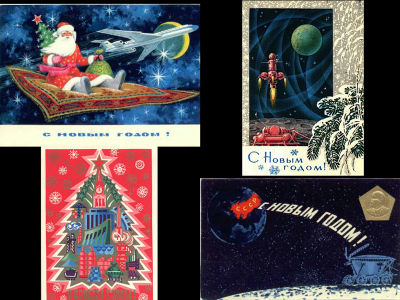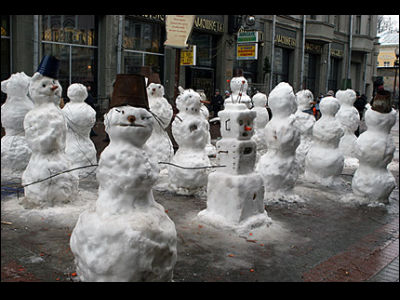How did Santa Claus survive the turbulence in the USSR?

by
Speaking of Santa Claus, the general image is 'the grandfather in red clothes riding a reindeer's sleigh', but in fact customs and images differ according to the country. In Russia, Jed Maros , dressed in blue and appears with his granddaughter, is known as the Russian version of Santa Claus. Atlas Obscura , a foreign media outlet, is approaching Jed Maros's turbulent history of violence and politics over the past 100 years, in contrast to the peaceful image of Santa Claus.
How Santa Survived the Soviet Era-Atlas Obscura
https://www.atlasobscura.com/articles/soviet-santa
In the first place, although there are various patterns of Santa Claus, it is believed that the origin is from the Odin, a god of war and death in Nordic mythology that existed before Christianity. Odin has a beard, rides a flying horse, and has been associated with the winter solstice festival Euretide (Yule) . It is believed that when Christianity swept Europe, Yule custom became Christmas custom, and that Santa Claus was created when Odin's image was mixed with the image of St. Nicolaos , who secretly gave a dowry to the parish's poor daughter. .
From there Santa Claus image branches in the Netherlands sintering Klaas , in Finland Yorupukki , in Hungary Mikulas , and in Russia it was born Ded Moroz.

by
Under the Russian emperor, Christmas was one of the major holidays, but it was not as important as Easter, and at that time it was not recognized as a 'festival'. Although the Russian Empire of the 18th century controlled many regions and was religiously diverse, most were Russian or Belarus, and most Christians belonged to the Eastern Orthodox Church . This will greatly affect the fate of Santa Claus in the Russian Empire and the Soviet Union.
Jed Maros's image is believed to be derived from the Snow Maiden, written by 19th-century playwright Alexander Ostrovsky . Ostrovsky is a political writer who depicts merchant society and corrupt aristocracy with his work, and the fairy tale snowmaid is one of his works.
The story features a Snow Maiden (Snegurochka) and his grandfather, Jed Malos. Malos is a snow nymph in old Russian mythology, but in Russia a harsh winter promises a harvest next year, and the snow nymph is not necessarily evil. However, in the Russian Empire at the time, the presence of Malos and other pagans did not attract attention until the Ostrovsky drama appeared.

by
Yukimusume became a popular opera, and Snegurochka and Malos gained interest from educated people. According to Vladimir Sorona, a historian at the University of Central Florida, the Snow Maiden has triggered the image of Santa Claus, trees and gifts for children in urban areas. The 'Russian Santa Claus,' a three-flying horse-drawn carriage, dressed in blue and white, holding magical tools, and giving gifts to children with his granddaughter Snegurochka, was completed.

The Eastern Orthodox Church did not admire the non-Christian Santa Claus, but did not persecute. However, the 'obvious religious festival' was later removed when there was a movement to abolish organized religion in the 1917
Such a movement aroused people's fears of 'practicing religion' in urban areas. However, from around 1935, winter holidays have been accepted as 'Novy God' (New Year) instead of Christmas, and will be established as winter events by 1950. For this reason, over the past 40 to 50 years, instead of Christmas, the 'New Year's Tree' has been decorated, and Jed Marlos celebrating the New Year has appeared. At that time, Christianity was regarded as an enemy, but Marlos was recognized as a leader of the Soviet Union because it had a pre-Christian origin. During the space race , Marloth was riding a spacecraft rather than a carriage, and was sometimes depicted as a communist, hardworking, muscular figure.

And in 1991, the Soviet Union collapsed, and religious practices were once again recognized. However, the people had never celebrated Christmas with their ancestors, so they did not fit well. 'The majority of people living in countries such as Russia, Belarus, Moldova and Ukraine recognize the New Year as a much more important holiday than Christmas,' said Alexander Statiev, a historian at the University of Waterloo. We recognize that Christmas is not a religion, it is just a party day for people. '
Related Posts:
in Note, Posted by darkhorse_log







